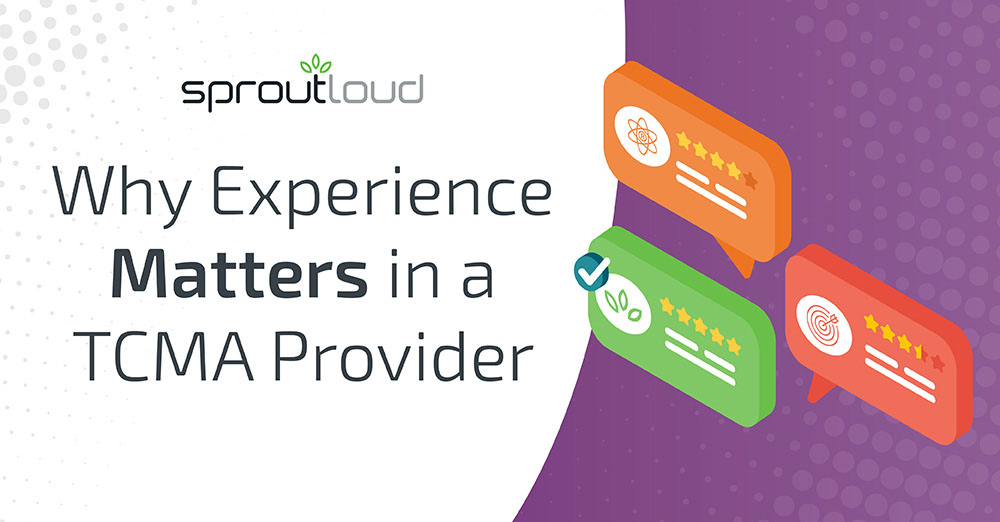
Why Experience Matters in a Through-Channel Marketing Automation Provider
“‘Until you know where you have been, you don’t know where you’re going,’” said a young Senator John F. Kennedy, quoting President Lincoln, more than six decades ago. The same holds true today for the marketing tech sector. Knowledge of where the Through Channel Marketing Automation (TCMA) has been — coupled with experience and expertise — gives us better insight on where we’re going.
The Origin Story of Through Channel Marketing Automation
Let’s take you back to the origins of software that was created specifically for companies to manage marketing and advertising assets digitally — since that’s where it all started. During the 1980s and early 1990s, graphic communications and publishing entered a new phase of the Digital Age, laying the groundwork for today’s marketing automation software, tools, and services. Art departments at brands and ad agencies were designing ads using early graphic arts software for typesetting, page layout and digital retouching with the introduction of Photoshop. Adobe played a big part in not only image editing but also page layout and lossless data image compression with the introduction of the Portable Document Format or PDF. The emergence of the internet drove the new world of marketing, and the result was high-demand for brand websites.
As all this was evolving, it quickly became apparent there was a need to store and manage an ever-increasing number of electronically created marketing assets. In the early days, storage costs were ridiculously expensive, and file transfers took hours instead of minutes or seconds as they do today.
So while this was happening, along comes to the idea that there is an entire universe of companies that have lots of locations and employees that need these digital marketing assets, thus the Digital Asset Management (DAM) software industry was born. There were no clear leaders in the beginning. Most early products were built internally and built for a company’s specific needs. Fast forward to the mid-90s, and a new class of software entered the market to provide a way to distribute and print assets as opposed to printing the assets before distributing them. Fast forward another 10 years, to the early 2000s, when early players were defining Distributed Marketing industry.
Early Players in Distributed Marketing Technology
The early players in Distributed Marketing technology mostly came from ad agencies and printing industry visionaries. It’s notable that prior to true Distributed Marketing software, early products were called “Web-to-Print” solutions. They primarily sold software to printing companies. And those printing companies would offer their Web-to-Print tools to their clients. Skip forward a few years, and you have several thousand printing companies offering this type of value-added product in order to secure the print collateral and direct mail work from the brands they service. Such products still exist today, but they are usually serving as a single-point solution and have limited customization capabilities when compared to the leaders defining the industry and investing in new product functionality. The early products were designed to support traditional marketing tactics (such as radio, TV and newspaper ads, as well as outdoor advertising and direct mail). At that time, in the early 2000s, digital marketing tactics had not fully evolved — yet.
The Evolution of TCMA
Fast forward another decade to the 2010s through today, and DAM software has evolved into a separate category from Distributed Marketing, though overlap still exists with some use cases blurring those lines a bit. Other traditional Co-Op Advertising management companies tend to either partner with an existing ad builder company or create their own ad building technology. Then, there are ad agencies that cobble together single-point solutions in an attempt to build marketing stacks for brands — this usually comes at a high cost and expensive maintenance for upkeep. There are so many options to consider that you could easily end up with analysis paralysis.
Today’s leaders in the Through Channel Marketing Automation industry have taken different routes to get to this level. Some companies have been purchased by private equity firms and are part of an acquisition strategy to integrate several products, tools and service offerings. Others have been purchased by big digital printing technology companies that provide in-house print management software and systems with service bureau output print and direct mail services on site. Others have been acquired by large global advertising agencies. As for SproutLoud, we have maintained the same core executive leadership team since the company was founded in 2006. And that’s a distinct differentiation that is worth considering.
The Value of Leadership
In our experience, who’s at the helm of company matters. It’s important to ask how long the executive team of a company you’re considering doing business with has actually been working together to run the business. At many companies, once a deal is signed, execution is left to the management teams and senior account support staff with very little involvement from the executives.
It’s important to know, in advance, if you’re dealing with a firm that is courting your business with an army of entry-level sales reps and junior biz dev managers. Can a junior rep truly be the best steward of your business goals and offer advice based on years of experience? Or will you have access to C-suite expertise? These are valid questions to ask.
What’s Next in TCMA Industry?
Forrester predicts the Through-Channel Marketing Automation industry is slated for about 25 percent CAGR (Compound Annual Growth Rate) for the next 5 years. In the near future, we can expect continued consolidation, new arrivals in the industry and major players showing an interest in TCMA. Growth and evolution have always been driven by leaders and innovators. Companies searching for a TCMA solution want a local marketing automation platform capable of scaling with them. That requires a tried and tested platform backed by a solid team with the expertise and experience to deliver results. At the end of the day, that’s why experience matters.

